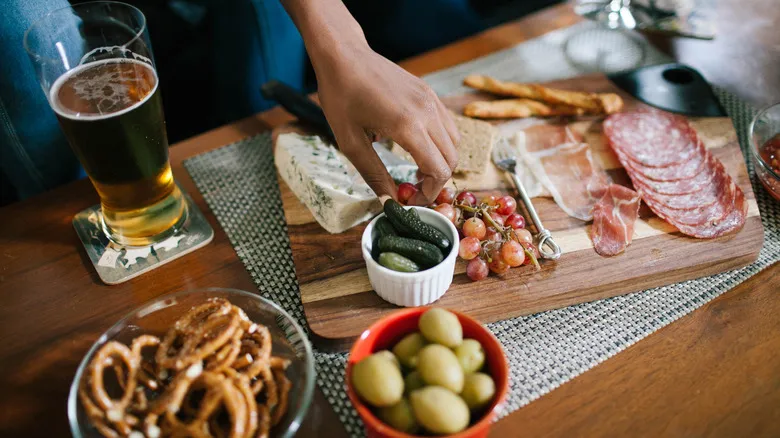When planning a charcuterie board, think in odd numbers
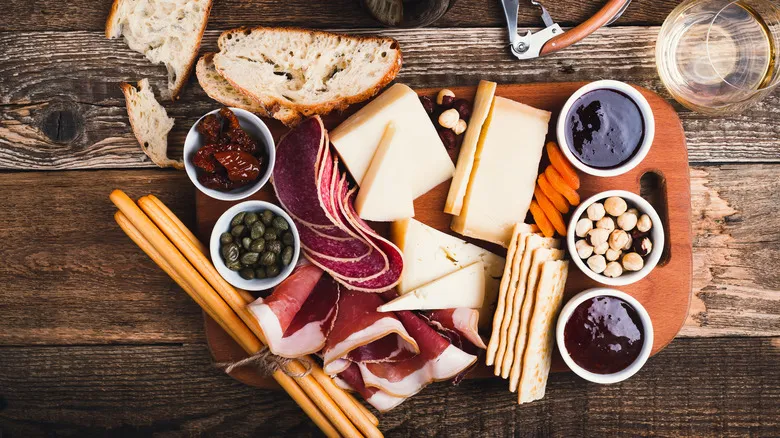
Dominick DiBartolomeo expresses, "I have a fondness for odd numbers and a passion for variety." So, how does this philosophy translate to creating a charcuterie board? He recommends featuring at least three types of meats and five varieties of cheese. Additionally, you should incorporate crackers or sliced bread, along with extras that enhance both texture and flavor diversity.
Consider adding items like nuts, fresh fruit, a couple of spreads, and something tangy or pickled, such as olives or cornichons. Before heading to the store, check your pantry and fridge for these ingredients, as purchasing new jars of extras can quickly add up. You might be surprised to find a jar of jam, honey, pickles, or olives tucked away in your kitchen.
Include a wide variety of meats and cheeses
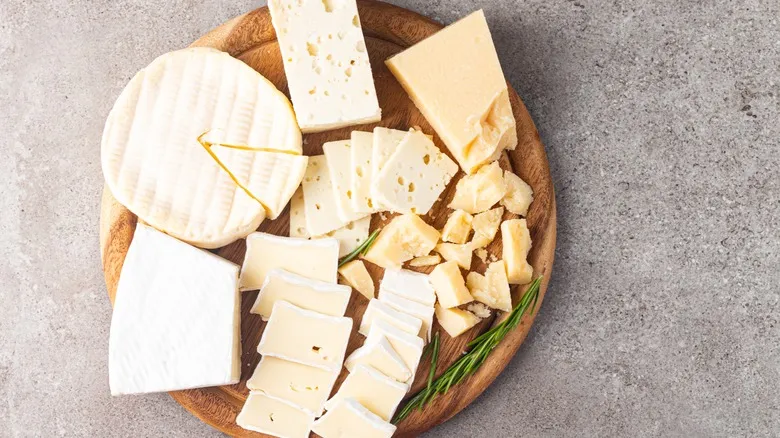
When considering cheese options, expand your thinking beyond just soft and hard varieties. Incorporate cheeses made from different animals as well. Dominick DiBartolomeo suggests including sheep, cow, and goat cheeses to enhance the range of textures and flavors. Aim to select at least one cheese from each texture category: soft, semisoft, firm, and hard. A quick tip on portion sizes: since cheese is typically sliced thicker than meat, you'll likely need to serve more of it.
This principle of diverse textures and flavors also applies to your meat choices. He recommends including a salami, a whole muscle cured meat (such as prosciutto, which is sourced from the leg, or bresaola, made from cured eye round roast), and a pâté, which is a seasoned, spreadable ground meat.
Use seasonal spreads and fruits
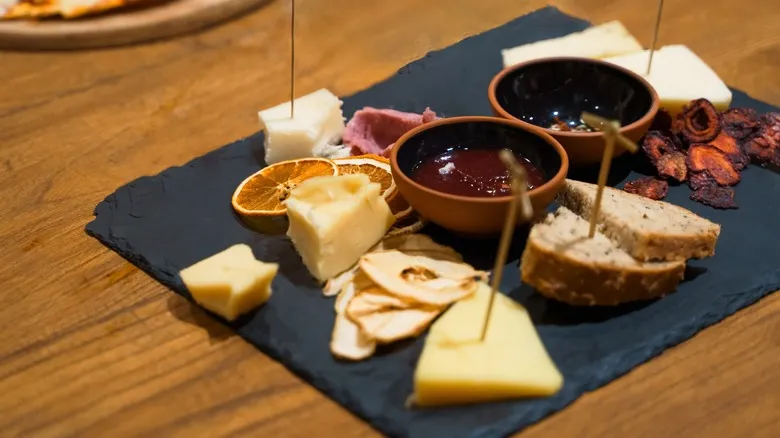
As Dominick DiBartolomeo suggests, mostardas are essential. This classic Italian condiment is crafted from fruit—either dried or fresh—combined with syrup and spices, which always include mustard powder or seeds (hence the name). Originally developed as a method for preserving fruit, various regions in Italy have their own distinct styles, with some being spicier or fruitier than others. Mostardas pair perfectly with rich, fatty meats and cheeses, adding a delightful tang and spice.
DiBartolomeo also enjoys adding seasonal jams and fresh fruit to his charcuterie boards for similar reasons. Not only do they enhance the flavors of the meats and cheeses, but they also showcase produce that is in season and at its freshest. For instance, consider using apples in the fall or a tart cranberry mostarda during the holidays. The crispness and sweetness of the fruit create a refreshing contrast to the board's heavy saltiness.
Think beyond the basic board
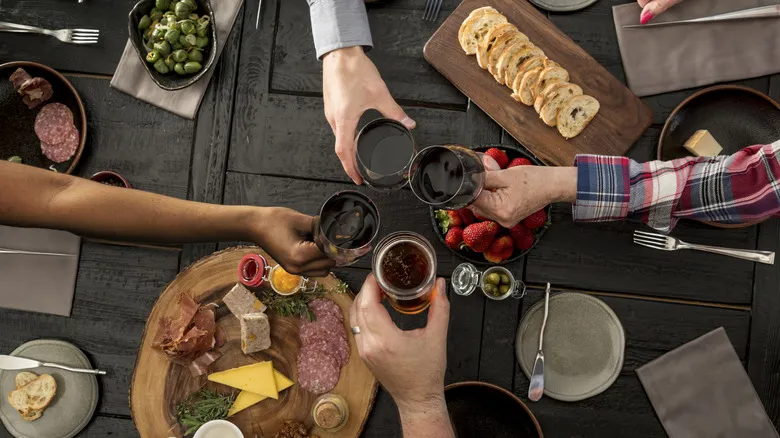
Don’t hesitate to think outside the box. If you’re looking to enhance your cracker and bread experience, Dominick DiBartolomeo recommends visiting your local bakery to discover any new or unique offerings. Specialty food shops are also excellent resources for finding exciting cheeses, spreads, and jams that can elevate your spread.
When it comes to charcuterie boards, presentation is key, so don’t feel obligated to use just any old platter or cutting board. Consider exploring Costco or craft markets, where you might stumble upon distinctive pottery, uniquely shaped cutting boards, tiered platters, or marble pieces.
Alternatively, you might want to visit a local antique store to find a vintage piece of fine china—oyster plates and deviled egg platters make lovely choices for showcasing meats and cheeses. You can even repurpose a collection of old teacups and saucers to hold various condiments and fruits. Goodwill thrift stores often have charming novelty platters (think oversized Grinch dishes and embossed turkey trays) that can add a fun, festive touch to your next gathering.
Recommended
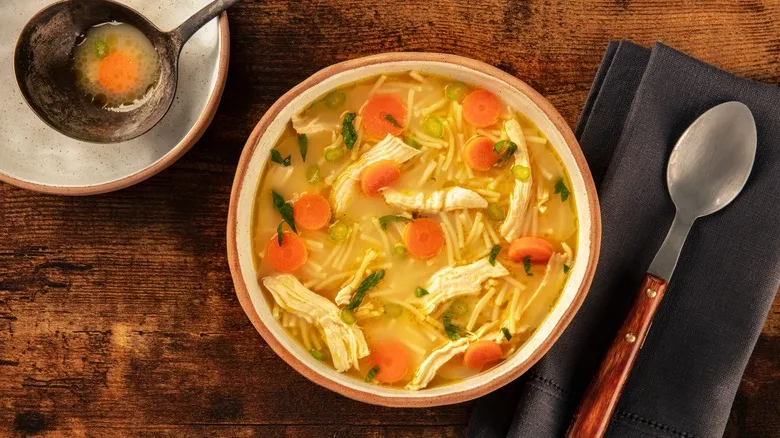
Give Chicken Noodle Soup More Depth With One Simple Addition

The Best Solution For Tough, Chewy Roasts Is A Surprisingly Easy Fix
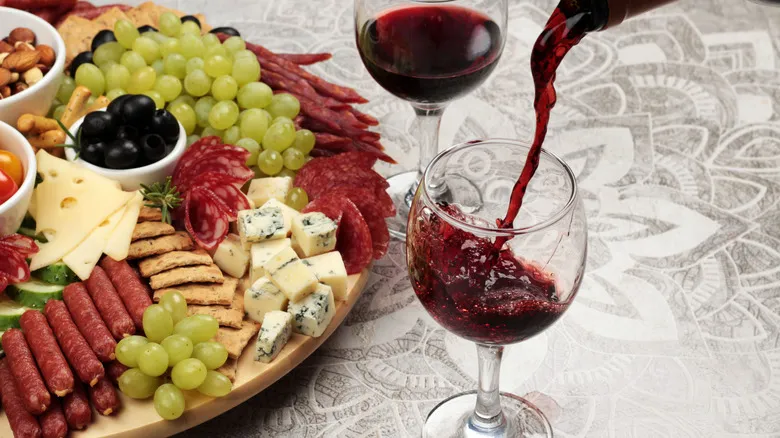
The Nut-Free, Lactose-Free, Vegan Charcuterie Board Item Sure To Please Everyone

Is It A Waste To Use Irish Butter For Cooking Or Baking?
Next up

